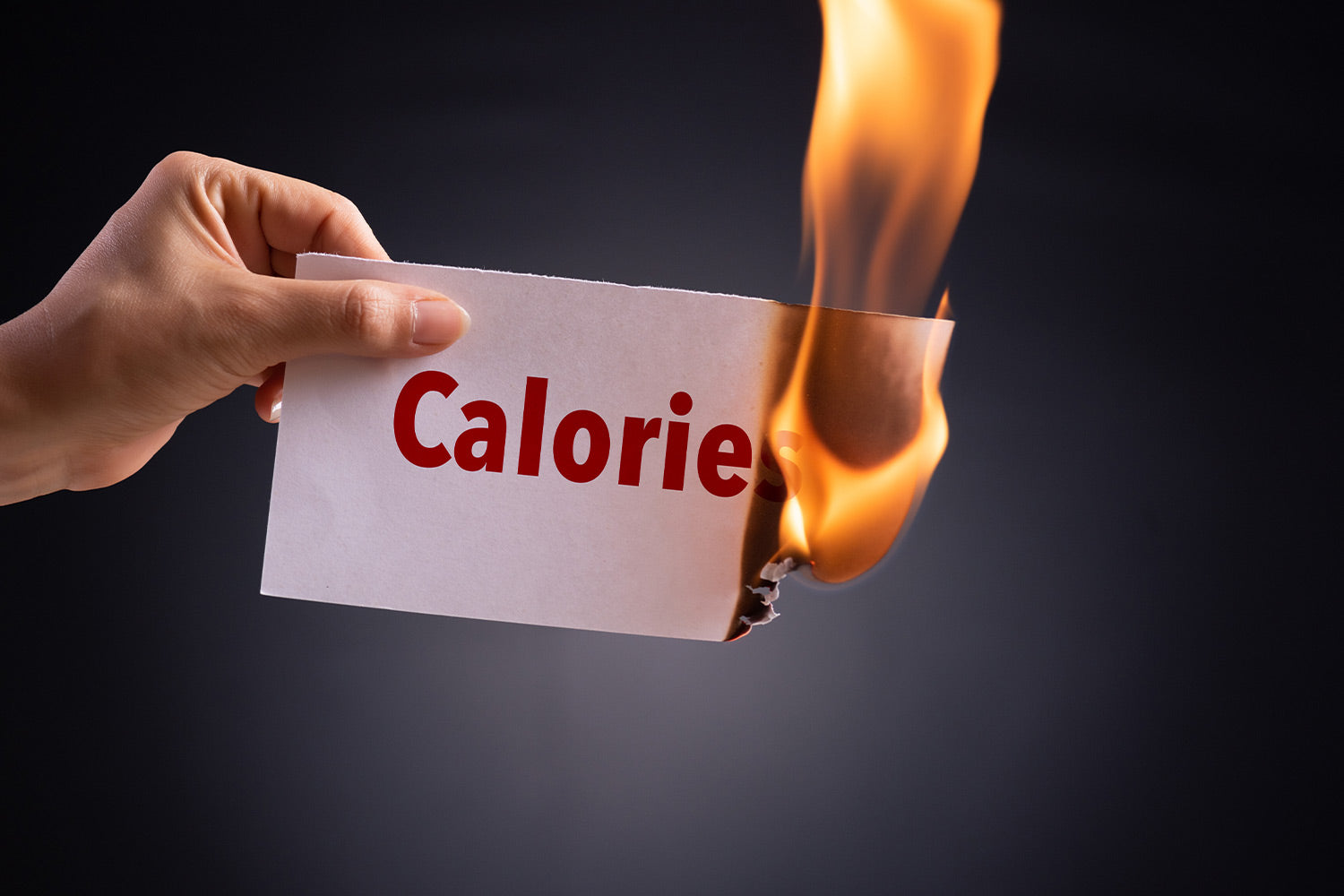Although cardio is one of the best ways to burn calories and improve your physique, there are many benefits to cardio that are more than skin-deep.
In addition to doing strength training at the gym, cardio can help you build endurance, stamina and help with weight loss. One of the main health benefits of regular cardio exercise is that it helps improve your heart health.
Read on to discover the amazing benefits of cardio with this guide from EnergyFit, along with a thorough explanation of what cardio is in the first place and a list of some of our favorite cardio workouts.
What Is Cardio?
While any type of exercise is amazing for your health, we’re referring to something specific when we say cardio.
Cardio—short for cardiovascular training—is any physical activity that focuses on challenging your heart and lungs. Through repetitive use of large muscle groups, you can improve your body’s lung capacity to take in oxygen and deliver it to the rest of your body. The ideal heart rate for cardio is between 70 and 80 percent of your maximum heart rate.
While there are hundreds of cardio workouts (more on this below), cardio can be roughly grouped into high-impact cardio and low-impact cardio.
High-impact cardio—true to its name—places a greater impact on your joints and requires you to have both feet off the ground. On the bright side, this type of cardio can raise your heart rate faster and challenge you in many ways. Running is one very popular example of this type of cardio.
Low-impact cardio is much more gentle on your joints but still great for conditioning your cardiovascular system. Some great examples include power-walking, hiking, and vigorous yoga—all of which can still give you an intense workout.
For optimal heart and length health, it’s recommended that you do 150 minutes of moderate-intensity cardio or 75 minutes of high-intensity cardio per week.
What Are Some Examples of Cardio?
There are tons of activities that count as cardio. Here is a list of some of the most popular forms of cardio exercise:
- Brisk Walking: It may seem like walking isn’t a form of exercise, but it can actually be very effective in challenging your heart and lungs if it’s done vigorously.
- Hiking: Hiking may be low-impact, but it’s definitely not easy. Depending on the terrain, you may be seriously challenging your muscles, and thus, your cardiovascular system.
- Running and Jogging: This is a classic as it requires no equipment and no special environment, which means it can be done virtually anywhere.
- Calisthenics: This is a group of exercises you do in quick succession using nothing but your own body weight. Some examples include burpees, jump squats, and mountain climbers.
- Swimming: Swimming is a perfect low-impact cardio workout that you can do when your muscles are sore without sacrificing high-calorie burn.
- Cycling (Or Bicycling): Whether you choose to go for a fun indoor spin class or take your bike out on the open road, this workout can challenge your leg muscles and cardiovascular system simultaneously.
- Dancing: Whether you’re into hip-hop, ballet, or ballroom dance, this is a fun way to get your heart rate up.
- Skiing (Or Snowboarding): You might be surprised to learn that skiing burns a ton of calories. And it’s something you can even do at home with our Ski-Row Air Machine.
- Team Sports: Many team sports can challenge your cardiovascular systems, such as volleyball, basketball, or soccer. The best part is you’ll be having so much fun you won’t realize you’re (technically) working out.
- Rowing: Rowing challenges many different muscle groups while making you sweat, making it both cardiovascular and resistance training.
- Vinyasa Yoga: While not all forms of yoga count as a cardio workout, the more vigorous vinyasa practice certainly does. In addition, yoga stretches your muscles and calms your nervous system.
Top 10 Benefits of Cardio Exercise
With a good overview of what cardio is, let’s jump right into the good stuff: Learning about all the amazing benefits of cardio.
While this list is definitely not exhaustive, it provides you with all the main benefits of engaging in cardio exercise. Without further ado, here are the top ten benefits of cardio:
1. Cardio Regulates Blood Sugar
Blood sugar isn’t inherently bad—we all have it in some amounts. Indeed, the average person has between four and seven grams of sugar circulating in their body before they’ve eaten anything in the morning. After eating a meal, blood sugar levels go up, and whatever isn’t used up immediately gets stored as glycogen—a complex form of sugar—in our muscles.
But sometimes, the sugar in the bloodstream doesn’t get whisked away as quickly as it should. In this case, you can have blood sugar that’s higher than we desire. And through a series of complex mechanisms, this sugar can lead to inflammation in the body and the brain.
But when you exercise, your muscles can quickly use up the excess sugar in your bloodstream since sugar is the preferred form of energy for your muscles. Over time, your body will even take up sugar more efficiently—without you having to do any exercise first.
2. Cardio Keeps Your Muscles Strong
Many forms of cardio—such as high-intensity interval training—can make your muscles grow bigger and stronger. Although the science is still unclear on how exactly this happens, the basic principle is this: Your body’s cells get bigger through the process of hypertrophy.
Hypertrophy happens when you cause a small amount of damage to your muscles. While we don’t want to cause excessive damage, these “microtears” in your muscle fibers get quickly repaired thanks to your body’s natural hormones and nutrients from your diet. However, instead of just repairing the muscles, your body actually makes them bigger and stronger.
As much as we love strong muscles for how they make us look, muscle strength is also important for helping you get through the rest of your daily activities with ease. Suddenly, walking up stairs, lifting heavy objects, and even keeping your back straight becomes easier thanks to stronger muscles.
Plus, muscles take up a lot more energy (read: calories) from your body—even when you’re at rest. This means that building muscles can cause you to burn more calories even when you’re not working out (otherwise referred to as having a fast metabolism).
3. Cardio Keeps Your Bones Healthy
Just like your muscles strengthen and grow in response to working out, so do your bones. Many forms of cardio exercise place a small amount of strain on your bones, which causes them to increase their mineral content and become denser. Conversely, the less you “use” your bones, the more likely they will decrease mass.
While exercise is important for people of all ages, this is especially the case as you begin to age. Since aging causes the bones to become weaker, working out will save you from fall-related fractures in old age.
But this is not to say that younger people should ignore exercise. Exercising while your bones are still developing in adolescence can maximize their density, which will be incredibly important in old age.
4. Cardio Can Lower Your Blood Pressure
Blood pressure measures the force that your heart uses to pump blood. If you’ve ever had your blood pressure taken, then you know that there are two parts to it (measured in millimeters of mercury or mmHg): your systolic pressure—how your heart pushes blood out—and diastolic pressure—when your heart rests between beats.
If you have high blood pressure, then your heart places a lot of force against the walls of your arteries. While this isn’t technically a problem in-and-of-itself, it can lead your arteries to harden, which can eventually cause cardiovascular problems.
Cardio is one way to decrease your blood pressure. It increases how much blood your heart can pump while requiring less effort to do so. Plus, cardio can help you lower your weight, which is another effective way to lower blood pressure.
5. Cardio Can Strengthen Your Immune System
Cardio can have a tremendous impact on your immune system. While it’s been suggested that overdoing any type of exercise can have the opposite effect, a healthy workout routine can stimulate your cellular immune response.
The processes underlying this are still being investigated. But what we do know is that exercise causes your stress hormones and your inflammatory responses to decrease. In addition, cardio increases the number of cells in your body that attack pathogens.
As such, there’s a decrease in discomfort and an increase in your body’s vigilance of viruses and bacteria. While researchers are still trying to figure out how exercise can protect us from COVID-19, there’s plenty of evidence showing that exercise can greatly decrease the symptoms of colds and flu viruses.
6. Cardio Can Improve Your Sleep
One of the main ways cardio can improve your sleep is decreasing stress levels. Stress is one of the most common reasons people experience sleep problems and can cause anything from restless sleep to full-on insomnia.
While we often associate exercises such as yoga with stress relief, cardio can actually have very similar effects. The benefits of cardio on sleep include greater ease of falling and staying asleep, more time spent in REM sleep (otherwise known as deep sleep), and a greater amount of energy upon waking up.
7. Cardio Can Improve Your Mood
Studies show that cardio is so effective in improving mood that it can be used to reduce depression symptoms.
Exercise increases feel-good brain chemicals, such as serotonin (which plays a role in mood, sleep, and cognition), brain-derived neurotrophic factor (which assists with growing brain cells), and endorphins (which give you that runner’s high feeling).
In addition, exercise can reduce how stressed out you feel. Since stress is a well-known mood downer, reducing it in any amount is incredibly beneficial. Plus, exercising can make you feel accomplished—especially if you’re working towards an exercise goal. This can go a long way in raising your self-esteem, affecting other areas of your life.
8. Cardio Can Boost Your Memory
Various studies show a positive correlation between how much cardio a person does and how big their hippocampus—the area of the brain responsible for memory—is. Because this brain area is generally the quickest to degrade during aging, it shows the importance of exercise in old age.
Of course, just because two things are related doesn’t mean that one caused the other. But studies show that doing cardio consistently can actually cause your hippocampus to grow!
One experiment found that exercise increased hippocampal volume by 2 percent in older adults, along with better performance on memory-related tasks. In addition, exercise leads to higher levels of brain-derived neurotrophic factor, which is responsible for stimulating the growth of brain cells in other areas of the brain.
9. Cardio Can Improve Your Attention
Another correlation that researchers found is one between cardio and concentration. This is especially true in children, where there’s a clear link between exercise and the ability to focus in the classroom.
While fewer studies in adults show that a quick burst of exercise (such as a quick walk) can enhance concentration for up to one hour. This likely happens because exercise sets off certain psychological mechanisms in the brain. For instance, having a better mood has made it easier to focus on harder tasks. Aside from that, exercise increases blood flow to the area of the brain responsible for your attention.
10. Cardio Keeps Cognitive Decline at Bay
Thanks to all the effects that exercise has on the brain, it should come as no surprise that it has been shown to prevent cognitive decline in old age.
Our cognition includes attention, executive function, reasoning, memory, and language abilities, declining with age. However, studies have shown that regular exercise can preserve many cognitive functions.
In addition, exercise significantly reduces behavioral problems associated with cognitive declines, such as increased agitation, due to a lack of certain neurotransmitters. Increasing levels of certain neurotransmitters such as serotonin can alleviate many behavioral problems associated with cognitive decline.
Get Moving
As much as exercise helps you look amazing, there are many more important reasons to do more cardio. Cardio can improve your heart and length health, increase cognitive, and, yes, even help with building bigger muscles.
Try to get at least 150 minutes of moderate (or 75 minutes of vigorous) cardio per week for the best results. And, of course, keep your cardio fun with new workouts—such as our favorite rowing machine.
Our Sources:
Aerobic Exercise | Science Direct
Sit Up Straight. Your Back Thanks You. | The New York Times
Effects of Resistance Exercise Timing on Sleep Architecture and Nocturnal Blood Pressure | NCBI
Exercise Training Increases Size of Hippocampus and Improves Memory | PNAS





Leave a comment
All comments are moderated before being published.
This site is protected by hCaptcha and the hCaptcha Privacy Policy and Terms of Service apply.